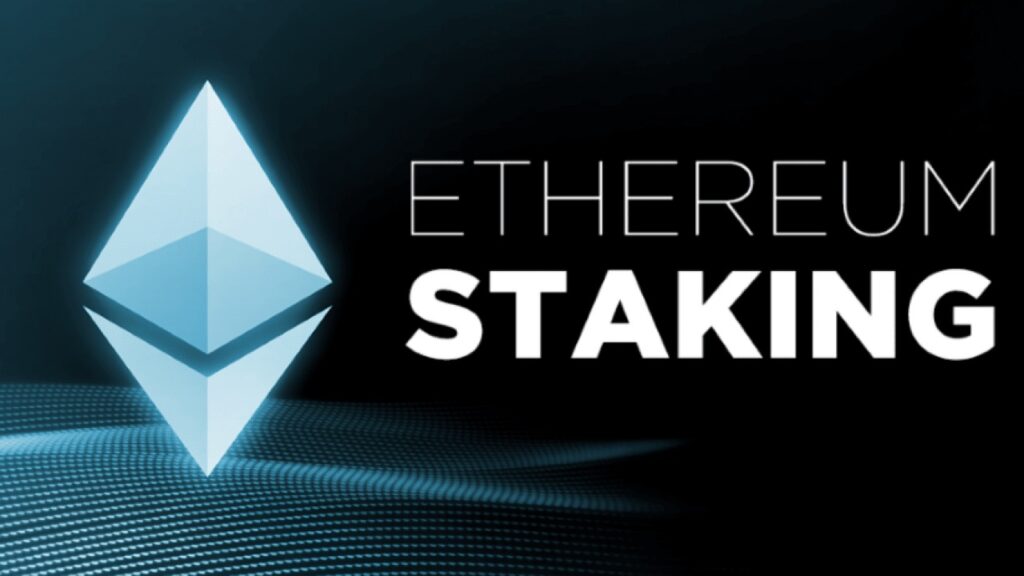Stake Ethereum: Ethereum (ETH) staking has quickly turned into one of the most popular methods by which crypto holders can earn passive income while supporting the platform. Staking has become mainstream with the different approaches investigated in Ethereum 2.0 as the phase of migration to Proof-of-Stake (PoS) from Proof-of-Work (PoW) was completed. This guide will, therefore, take a beginner through the day-to-day process of staking Ethereum (ETH).
What Is Ethereum Staking?
Staking refers to the action of immobilizing your ETH so that you can help secure the Ethereum blockchain and earn rewards in return. Where miners validate transactions in PoW, validators in PoS are nominated to create new blocks based on the ETH that they’ve staked.
By staking your ETH, you would be contributing to the decentralization and securing of the network while earning around 3% to 6% in annual percentage yield (APY), which barely varies according to your staking method.
Ethereum Staking Requirements

- Minimum ETH Needed:
- Solo Staking: 32 ETH (required to run your own validator node).
- Staking Pools/Exchanges: No minimum (you can stake any amount).
- A Secure Ethereum Wallet (if not staking via an exchange).
- Stable Internet Connection (for solo staking).
- Basic Understanding of Crypto Security (protecting private keys).
If you don’t have 32 ETH, don’t worry—you can still stake through pools or exchanges with smaller amounts.
How To Stake Ethereum: Step-by-Step Guide
There are three main ways to stake Ethereum:
- Solo Staking (Running Your Own Node)
- Staking via a Pool
- Staking on Centralized Exchanges
Let’s explore each method in detail.
Method 1: Solo Staking (For Advanced Users)
Solo staking requires 32 ETH and technical knowledge to run a validator node. Here’s how it works:
Set Up a Ethereum Wallet
- Download a non-custodial wallet like MetaMask or Ledger (hardware wallet for extra security).
- Ensure you have 32 ETH in your wallet.
Install Ethereum Node Software
You’ll need:
- Execution Client (e.g., Geth, Nethermind)
- Consensus Client (e.g., Prysm, Lighthouse)
Generate Validator Keys
- Use the Ethereum Staking Launchpad (https://coinetech.com/) to create keys.
- Follow the instructions to set up your validator.
Deposit 32 ETH
- Send your ETH to the official Ethereum staking deposit contract.
- Once activated, your node will start validating transactions.
Maintain Your Node
- Keep your node online to avoid penalties.
- Monitor performance using tools like Beaconcha.in.
✅ Pros: Highest rewards, fully decentralized.
❌ Cons: Requires technical skills, 32 ETH minimum.
Method 2: Staking via a Pool (Best for Small Investors)
If you don’t have 32 ETH, staking pools allow you to contribute smaller amounts. Popular options include:
Choose a Staking Pool
- Compare fees, rewards, and reputation.
Connect Your Wallet
- Use MetaMask or WalletConnect to link your wallet.
Deposit ETH
- Enter the amount you want to stake.
Receive Staked ETH Tokens
- Pools like Lido issue stETH (staked ETH), which represents your stake.
Earn Rewards
- Rewards are automatically compounded.
✅ Pros: No minimum ETH, easy to use.
❌ Cons: Lower rewards than solo staking, smart contract risk.
Conclusion
Staking Ethereum is one of the best ways to earn money while contributing to the network’s security and decentralization. From beginners to advanced users, staking methods fit any level. Beginner users can start with centralized exchanges like Coinbase and Binance for easy setup. Small amounts of ETH can be staked through staking pools like Lido or Rocket Pool.
Advanced users, especially those with 32 ETH, can run a solo validator node to get the highest rewards and have complete control over the stake. Armed with this tutorial, you can now start staking Ethereum with full confidence. The earlier you start, the more rewards you can get in due time. Ready to stake your ETH? Pick the method you prefer and start earning today! 🚀 Want more tips on crypto? Subscribe to get the latest guides on staking, DeFi, and blockchain technology!
Disclaimer: Investing in cryptocurrencies has risks. Do perform your thorough research and stake only what you can afford to block.


